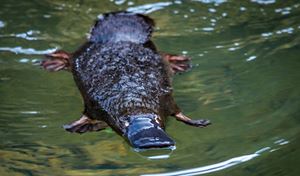Platypus Rescue and Release
Wednesday, August 15, 2018

‘George’ was seen at a riverside holiday park struggling to climb the bank of the river, and those watching knew he was in trouble so they immediately called WIRES.
WIRES volunteer, Tracy says the first priority was to get him warm and dry, as saturation of the thick pelt can be very detrimental to a platypus’s health. He was very thin, lethargic and with almost no body fat and he was infested with ticks.
The development stage of his spurs indicated he was a young male. He was offered fluids and luckily he took to this quite well after some initial reluctance. He was kept warm and monitored overnight and although he was more alert and had definitely improved a little by the morning Tracy says he was clearly still in very poor health. She knew his survival was uncertain, and that the best chance for him would be to be in a specialist facility, so she contacted Taronga Zoo wildlife hospital and was able to take him there for long-term care, rehabilitation and ultimate release.
If you, or someone you know would like to receive rescue stories about wildlife directly to your inbox please register for our enews.
The beautiful image of 'George' was taken after his release by Kaleb Amos
Recent Posts
WIRES launches its first wildlife rehabilitation centre - Mullyang
WIRES Emergency Response in the wake of ex-tropical cyclone Alfred
International Women’s Day Volunteer Spotlight: Shelley
Tropical Cyclone Alfred – Emergency Wildlife Advice
Interview with WIRES Training and Development
Celebrating Women in Science: The Journey of Holly, Wildlife Conservationist and WIRES Team Member
